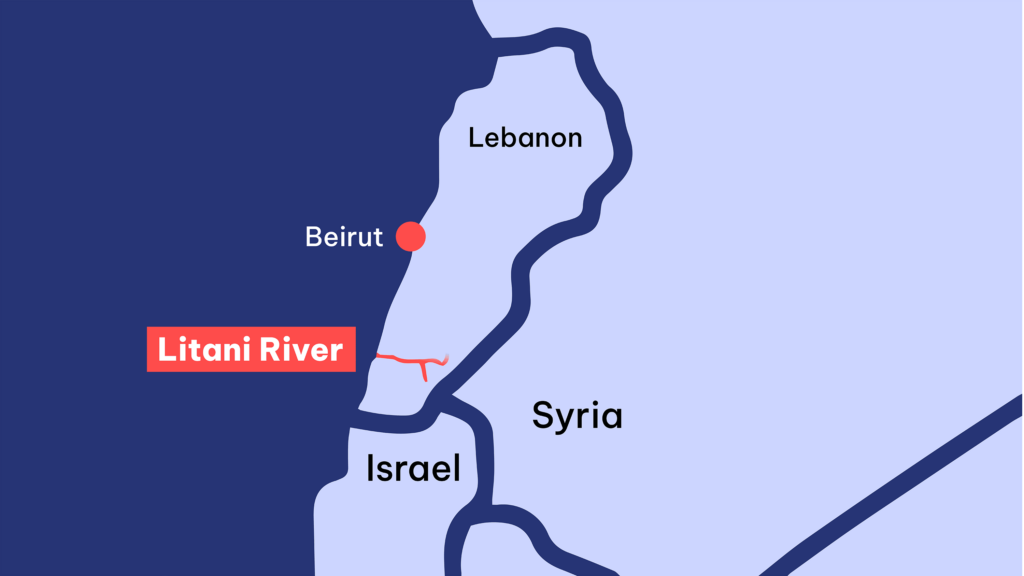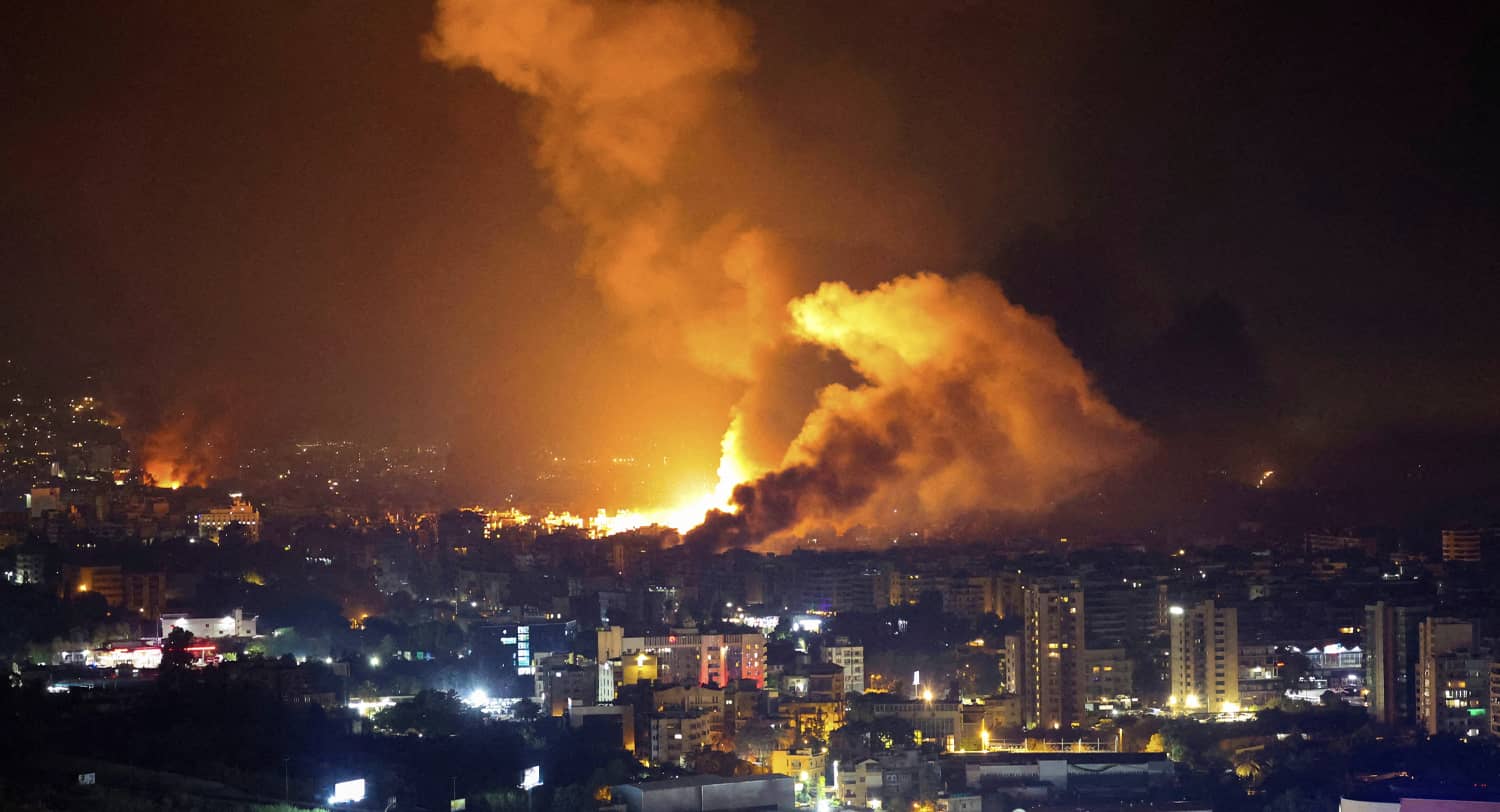Israel’s recent military actions in Lebanon and Gaza have fundamentally shifted the balance of power in the Middle East to the detriment of the Iranian-led axis and to the benefit of the American-aligned axis of Israel and Arab states, some of which have, with quiet Saudi approval, gambled on relations with the Jewish state to help offset the threat from Iran.
The Third Lebanon War
On October 8, a day after Hamas’s invasion of Israel in the south, Hizbullah joined the attack, likely under Iranian orders, dragging Israel into a year-long war of attrition. The goal, as repeatedly and publicly stated by Nasrallah, was to force Israel into a withdrawal from Gaza to allow Hamas, Iran’s principal Palestinian ally, to recover its military and governing capabilities.
Hizbullah has fired over 9,500 rockets, missiles, and drones at Israel since October 8. Its attacks have internally displaced some 60,000 Israeli residents; returning them to their homes in Israel’s north became an official Israeli war goal on September 16. Hizbullah has rejected every Israeli and international call to cease its attacks, and continued to condition such a ceasefire on a full Israeli withdrawal from Gaza.
The consensus intelligence assessment was that following the kind of decapitation strike that Israel did on September 27, Hizbullah would unleash thousands of projectiles – a mix of unguided rockets, explosive drones, and guided missiles – and place the Israeli home front under an unprecedented test. This nightmare scenario has not materialized, owing to Israel’s preemptive strikes.
Israel’s Preemptive Strikes
The September 27 airstrike on Hizbullah’s underground command center in Beirut, located beneath residential buildings and near a UN school, targeted a meeting of the senior command. The strike killed Hassan Nasrallah who had led the organization since 1992. He had worked with Iran’s Islamic Revolutionary Guards Corps to transform Hizbullah from a smaller terror group into a military force armed with advanced missiles and tens of thousands of rockets supplied by Iran. In the 1980s, Syrian forces entered Lebanon to quell a civil war, but in the 2010s, it was the Lebanese forces of Hizbullah, marshalled by Iran, that entered Syria to save the Assad regime during the Syrian civil war.
On September 29, the IDF announced that 20 other senior terrorists present at the underground headquarters in Beirut were also eliminated alongside Nasrallah. They included Ali Karaki, commander of the Southern Front who was serving as second in command at the time, Abd al-Amir Muhammad Sablini, head of Hezbollah’s force build-up, and Ali Naaf Ayoub, responsible for coordinating Hizbullah’s firepower.
These commanders played critical roles in managing Hizbullah’s offensive capabilities, and their removal plunged the organization into chaos. Its inability to communicate effectively following the pager and walkie-talkie attacks, which injured many hundreds of field commanders, had a devastating influence on Hizbullah’s reactions to the Israeli airstrikes.

The threatened scenario in Israeli minds was thousands of projectiles fired on Israel per day. Instead, as of September 30, Hizbullah is launching between a dozen and a few hundred rocket attacks daily on northern Israel. Its first attempt to fire a ballistic missile at central Israel, with Mossad headquarters being the intended target according to Hizbullah, was intercepted without difficulty by the David’s Sling air defense system on September 25.
The IDF has eliminated multiple precision munition sites in Lebanon, including buildings in Beirut that were used to house Iranian-supplied cruise missiles intended to hit Israeli targets at sea and deep within Israel, according to the IDF.
Hizbullah embeds advanced weapons systems, including precision missiles and drones, in civilian areas of Lebanon, posing a major threat to Israeli security, including to key strategic Israeli sites – a threat that the Israeli Air Force has been able to largely remove due to a series of mass precise airstrikes.
The extent of the Israeli Air Force’s ability to remove such threats from the air has surprised many observers. Between September 23 to 25 alone, it attacked over 2,000 Hizbullah targets that contained tens of thousands of rockets and many launchers. Hizbullah still has tens of thousands of rockets at its disposal according to IDF assessments, but is struggling to fire them in large numbers owing to the disarray within its command structure.
The Israeli Air Force employed new tactics in monitoring and preempting Hizbullah’s attempts to fire rockets, an effort enabled by close cooperation between the air force, the IDF Northern Command, and military intelligence.
With the majority of Hizbullah’s senior leadership eliminated, and much of its firepower neutralized, the Israeli Air Force has focused on creating a kind of firewall around Lebanon to prevent Iranian resupply efforts for its collapsing proxy.
Major General Tomer Bar, commander of the Israel Air Force, confirmed on September 26 that “in Lebanon, we are now going to prevent any possibility of transferring weapons from Iran to Hizbullah,” during a visit to the Tel Nof airbase south of Tel Aviv, which houses Israeli F-15 squadrons.
Israel has also warned Iran to refrain from smuggling weapons on flights to Beirut’s Al-Hariri Airport, or on ships heading to Beirut seaport. The effort also involves continuous strikes along the Syrian – Lebanese border, as well as reported weapons sites in Syria itself, where airstrikes have targeted Hizbullah missile production, storage, and smuggling sites.
How Will Iran React?
With its primary proxy force in the region degraded, Iran now faces a difficult decision.
Israeli experts on Iran, such as Michael Sega of Acumen Risk, a Tel Aviv-based consultancy, believe Iran is unlikely to directly intervene in the conflict, which could trigger domestic unrest and a broader confrontation with Israel than Tehran wants at present. Iran is more likely to focus on rebuilding Hizbullah’s infrastructure, per Segal.
Iran is losing a key insurance policy for the protection of its nuclear program. Hizbullah is intended to serve as a deterrent against Israeli strikes on Iran’s nuclear facilities. With Hizbullah’s firepower degraded, Tehran could find itself highly vulnerable to an Israeli attack.
Segal pointed out that Iran now faces two strategic choices: it could publicly declare itself a “threshold state” with the capacity to quickly develop nuclear weapons, or it could enter into negotiations with the West, seeking to buy time for its nuclear ambitions.
In addition, Iran and Hizbullah could seek to attack Israeli targets overseas, with the commander of Hizbullah’s 910 Shadow Unit (external operations) still at large. It would be up to Mossad to thwart those attempts, as it has done repeatedly already in recent years in cooperation with its partners in law enforcement and security agencies throughout the world.
What Next in Lebanon?
Looking ahead, the big question is whether the United States and the international community will be able to seize this opportunity to negotiate a better ceasefire arrangement in Lebanon. Such an arrangement should result in Hizbullah withdrawing its elite Radwan kill-and-capture squads, and its three territorial southern Lebanese units (Nasser, Aziz, and Badr) to behind the Litani River.

The alternative is an Israeli ground operation to complete Israel’s war aims. If a new ceasefire arrangement is reached, either before or after an Israeli ground maneuver, the question of who will enforce it will remain the most critical issue.
The Lebanese Army Forces is unlikely to enforce any ceasefire arrangement. It has been deeply infiltrated by Hizbullah, with a growing number of Shi’ite officers, and it collaborates with Hizbullah on a regular basis. Both United Nations Security Council Resolution 1701 (2006) and Resolution 1559 (2004) call for the disarming of militias in Lebanon but neither resolution specifies the means to accomplish this difficult task.
UNIFIL (the UN Interim Force in Lebanon) has spent the past 18 years, from the end of the Second Lebanon War in 2006, proving its utter inability to challenge Hizbullah’s force build-up across hundreds of Shi’ite villages in southern Lebanon.
In the absence of a realistic enforcement mechanism for a new ceasefire, it seems likely that Israel will enforce any future arrangement on its own, through the use of airstrikes, and possibly, targeted ground raids.

